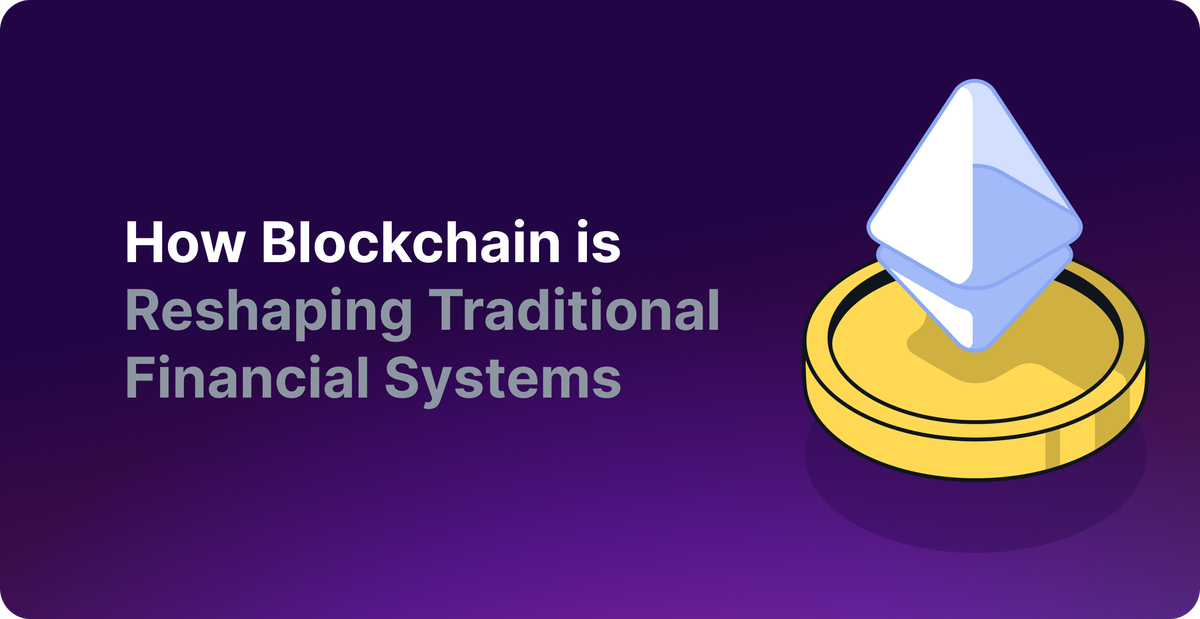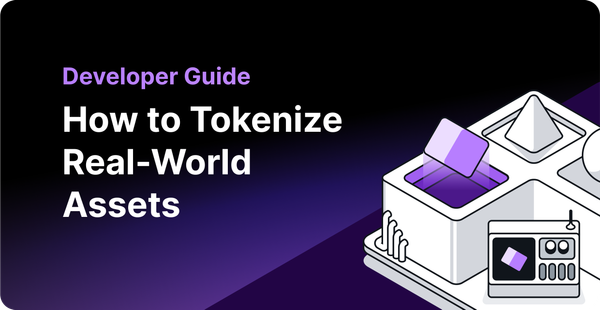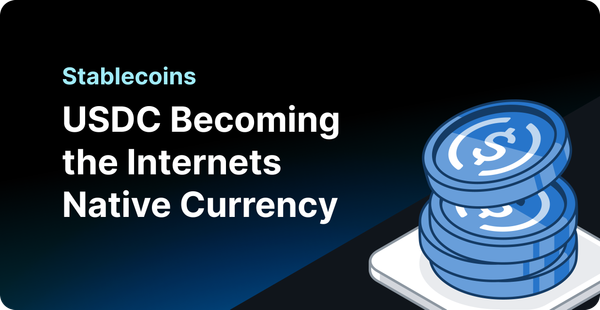How Blockchain is Reshaping Traditional Financial Systems
Explore how blockchain technology is transforming the financial sector, from peer-to-peer lending to decentralized trading.

Blockchain is steadily evolving into a core component of the financial world, courtesy of its transparency and security. It’s emerging as a strong alternative to current financial systems, which often suffer from opacity, lack of user privacy, and gatekeeping.
Applications and products built on blockchain inherently give users improved accessibility and greater control over their data. Further, smart contracts improve the efficiency of financial processes, making them more streamlined and user-friendly.
But that’s not all.
In this article, we’ll delve deeper into the benefits of blockchain-based financial solutions and the challenges and opportunities businesses might face when adopting this new technology.
Evolution of Blockchain in Finance
2008/09: The birth of Bitcoin marks a major breakthrough point in blockchain-based finance applications. This challenges the traditional financial system with its on-chain transparency and global accessibility.
2015: Ethereum arrives as a playground for developers to build decentralized applications (dApps), laying the groundwork for decentralized finance (DeFi).
2017: DeFi grows into diverse financial services like peer-to-peer lending, trading, etc. that work with automated smart contracts.
Present: Today, liquid staking, asset tokenization, derivatives, and advanced financial applications have emerged.
Key Components of Blockchain-based Financial Solutions
Here are some core blockchain components driving financial solutions:
- Distributed Ledger Technology (DLT): The foundation of blockchain-based financial solutions lies in DLT, a decentralized database that facilitates secure and transparent record-keeping. Unlike traditional centralized systems, DLT distributes the records across a network of nodes. This ensures data immutability and tamper-proof records, fostering trust and accountability.
- Smart contracts: Smart contracts are self-executing code stored on the blockchain. They automate the execution of financial agreements based on predefined terms and conditions, removing the need for intermediaries and streamlining complex processes. This reduces transaction costs, increases efficiency, and minimizes the risk of human error or fraud.
- Consensus mechanisms: Consensus mechanisms ensure that most participants agree on the validity of new transactions through predefined rules. This decentralized approach eliminates the single point of failure inherent in traditional systems, making blockchain resistant to manipulation and fraud.
- Decentralized oracles: Decentralized oracles bridge the gap between the blockchain and the external world. They provide a secure and reliable way to access and feed external data into smart contracts, enabling them to react to real-world events and trigger actions based on those events.
- Tokenization: Tokenization is the process of converting real-world assets (RWA) into digital tokens on the blockchain. By breaking down assets into smaller units, tokenization makes them more readily tradable on secondary markets, enhancing liquidity and providing investors with greater flexibility.
Blockchain Financial Systems: Real-World Examples
Blockchain technology is revolutionizing finance, with applications spanning diverse sectors. Let's explore some real-world examples showcasing its impact:
Cryptocurrencies
Traditional financial systems often struggle with inefficient cross-border payments, exorbitant transaction fees, and limited financial inclusion. Cryptocurrencies, like Bitcoin and Ethereum, facilitate near-instant cross-border transactions at significantly lower costs than traditional methods.
Importantly, cryptocurrencies offer financial autonomy — as this economy has no gatekeepers. This facet is particularly beneficial in regions with unstable economies and limited financial services.
Peer-to-peer Lending
Traditional loan applications involve complex processes and intermediaries, leading to slower approvals, higher fees, and limited access to credit for some borrowers.
Blockchain lending platforms leverage the power of smart contracts to revolutionize the loan process. These self-executing contracts automate loan approval based on predefined criteria. This approach reduces subjectivity and delays, offering a more accessible credit system to borrowers.
Lending platforms such as Aave and Compound allow users to earn interest or borrow against their crypto assets.
Decentralized Finance (DeFi)
DeFi challenges the traditional financial landscape of intermediaries and gatekeepers by empowering individuals to participate directly in the financial system.
By facilitating direct access to financial services like lending, borrowing, and trading, DeFi enhances financial inclusion, particularly for the unbanked and underbanked. It also ensures greater transparency and trust through smart contracts, reducing the risk of fraud and corruption.
In the same way, major DeFi protocols like Uniswap and Curve are running on autopilot mode while facilitating financial interactions for millions worldwide, thanks to smart contracts.
Central Bank Digital Currencies (CBDCs)
Central Bank Digital Currencies (CBDCs) are digital forms of a country's fiat currency issued and regulated by its central bank. They give central banks a more direct mechanism to implement and adjust monetary policies.
For instance, in a digital currency system, a central bank could apply negative interest rates directly to digital wallets to encourage spending during economic downturns. This direct approach can be more efficient.
Additionally, CBDCs can offer better traceability of funds, aiding in the fight against financial crimes like money laundering.
Several countries have launched or are actively piloting Central Bank Digital Currencies (CBDCs) like China's Digital Yuan (e-CNY) Digital Yuan (e-CNY)or the eNaira of Nigeria.
How to Integrate Blockchains Into Existing Financial Systems?
Integrating blockchain into a company's existing financial systems involves a structured and strategic approach consisting of the following steps:
- Strategic planning: Conduct a feasibility study to define how blockchain can enhance financial operations. Simultaneously, a risk assessment will be conducted to identify and plan for potential regulatory compliance challenges.
- Blockchain selection: Choose the appropriate type of blockchain (public, private, or consortium) based on specific needs such as transparency and security. Develop or customize blockchain solutions, incorporating smart contracts and interoperability features.
- Integration: Develop a strategy for integrating the blockchain system with existing financial software and databases, including data migration plans. Implement robust security and privacy protocols to protect the system and sensitive financial data.
- Implementation: Pilot-test the blockchain solution to identify issues and gather user feedback for refinements. Then, gradually implement the system, starting with less critical operations and expanding to more significant areas while providing continuous monitoring and support.
- Evaluation: Regularly evaluate the system’s performance and adapt based on user feedback and evolving business needs. Also, stay updated with blockchain advancements to incorporate new features and maintain efficiency.
Challenges of Integrating Blockchain Technology into Existing Financial Systems
Here’s a breakdown of the challenges companies face when it comes to integrating blockchain solutions into existing financial systems:
- Lack of fiat-to-crypto integration: The lack of fiat-to-crypto conversion infrastructure hinders mainstream adoption of blockchain-based financial solutions and makes development complex.
This is where fiat on-ramps come in. They offer pre-built application programming interfaces (APIs), simplifying integration into apps and eliminating the need for developers to build from scratch.
Moreover, their user-friendly interfaces make buying crypto easier and more accessible to a broader audience.
- Scalability issues: Current blockchain platforms often struggle with bottlenecks and high transaction fees, especially under high volume, which limits their effectiveness for large-scale financial applications.
To tackle these scalability issues, the blockchain community is exploring solutions like layer-2s, dedicated blockchains for specific applications (app chains), and even better consensus mechanisms.
- Interoperability: The fragmented nature of the blockchain landscape, with limited communication between different platforms, restricts the seamless flow of assets and data.
This necessitates the implementation of interoperability protocols like Inter-Blockchain Communication (IBC) and other cross-chains, which enable communication and asset transfer between disparate blockchain networks, fostering a more interconnected and efficient financial ecosystem.
- Complex developer experience: The complexity and fragmentation of blockchain development tools present a significant challenge for developers in creating financial solutions.
However, the availability of software development kits (SDKs) and APIs addresses this issue effectively as they provide streamlined, standardized sets of tools and protocols that simplify the development process.
- Regulatory compliance: The evolving and often unclear regulatory environment surrounding blockchain technology poses a significant challenge for financial institutions.
However, this challenge can be effectively addressed by engaging with a dedicated legal team or choosing development tools and platforms with built-in compliance.
Blockchain tech and its components are novel and young. Therefore, integrating them into existing financial systems does come with challenges. However, innovations like fiat on-ramps and developer tools make it easier for developers to build blockchain-based financial solutions.
Future of Blockchain-Based Financial Systems
Blockchain technology is reshaping traditional finance and democratizing financial services. From cryptocurrencies to DeFi platforms, financial inclusion is being prioritized. We await the maturity of these digital assets and the infrastructure for the solutions to cater to the masses.
Another critical area to consider is how traditional financial participants like banks embrace tech-driven solutions. If done right, this embrace and integration can supercharge how people transact, do business, and build a truly global economy.
Financial solutions built on blockchain promise a fundamental change in how we interact with money, assets, and the broader financial world.

About QuickNode
QuickNode is building infrastructure to support the future of Web3. Since 2017, we've worked with hundreds of developers and companies, helping scale dApps and providing high-performance access to 25+ blockchains. Subscribe to our newsletter for more content like this, and stay in the loop with what's happening in Web3!





